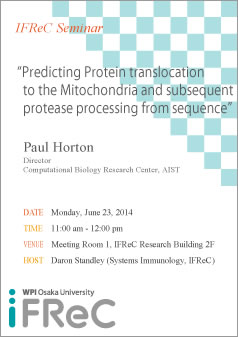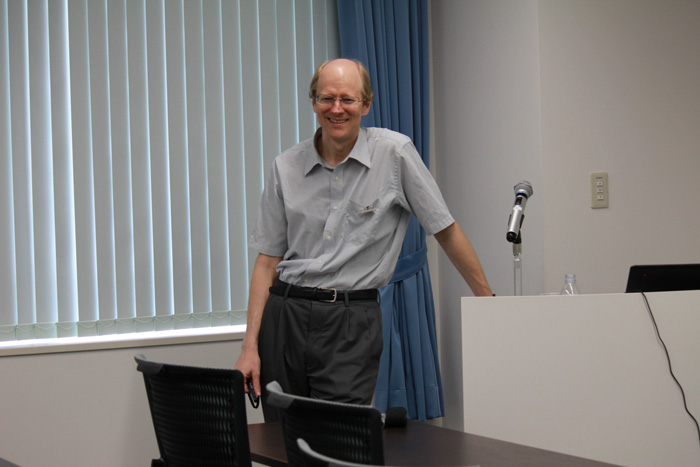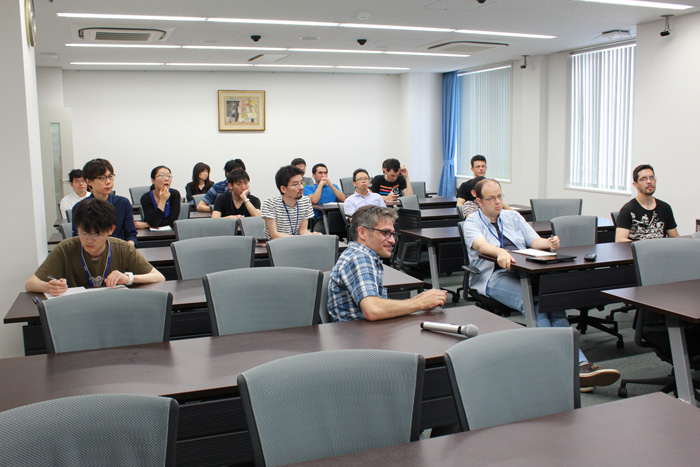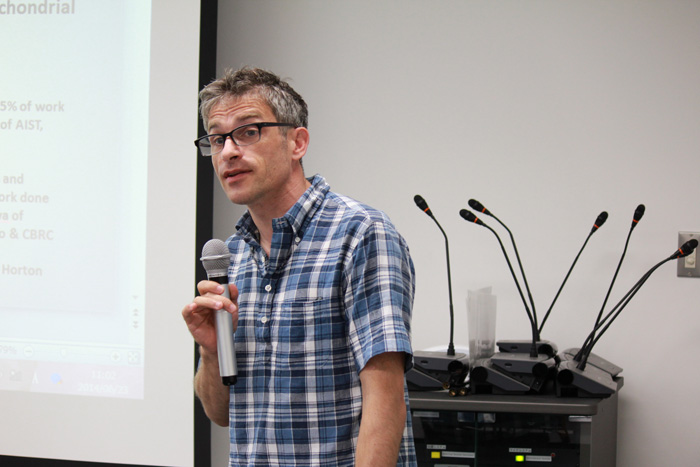News & Topics
A seminar by Dr. Paul Horton was held on Monday, June 23.
A seminar by Dr. Paul Horton、"Predicting Protein translocation to the Mitochondria and subsequent protease processing from sequence”was held on Monday, June 23.
| Date / Time | Monday, June 23, 2014 11:00 am - 12:00 pm |
| Speaker | Paul Horton (Director / Computational Biology Research Center, AIST) |
| Title | "Predicting Protein translocation to the Mitochondria and subsequent protease processing from sequence" |
| Venue | Meeting Room 1, IFReC Research Building 2F |
| Host | Daron Standley ( Systems Immunology, IFReC) |
| Abstract | I will spend most of my talk introducting MitoFates, a new computer program for predicting the mitochondrial translocation of nuclear encoded proteins. As is well known, the vast majority of mitochondrial proteins are encoded in the nuclear genome, synthesized by cytosolic ribosomes and subsequently (sometimes co-translationally) translocated into mitochodria. Most of these proteins posses an N-terminal amino acid signal known as an MTS (Matrix Targeting Signal), which is recognized by machinery on the outer surface of mitochondria as a translocation signal. The MTS is usually cleaved by a protease (MPP) upon translocation into the mitochondria and in some cases the protein is further cleaved but secondary proteases such as Oct1 and Icp55. MTS sequences show great diversity with no simply definable consensus. However they do consistently exhibit certain features such as a high arginine composition and near lack of negatively charged residues. In, now classic work, prediction methods such as TargetP were developed and have proved useful in providing hints to experimental biologists. Unfortunately the prediction accuracy of such tools is far from perfect and no major advances have been made in the last decade. I will describe a new prediction tool, MitoFates, developed by Yoshinori Fukasawa, Kenichiro Imai and others at our center; as well as several observations we made during its development. To develop a more reliable prediction method, we introduced three new sequence features: a refined helical moment score, novel sequence motifs and improved cleavage site prediction based on recent proteomic data. MitoFates attains better performance than the existing predictors in both the prediction of MTS's and their cleavage sites. Using MitoFates, we attempted to survey candidate undiscovered human mitochondrial proteins. MitoFates predicted 927 undiscovered mitochondrial protein candidates from 42217 human proteins including isoforms such as alternative splice or translation initiation variants. Moreover the novel mitochondrial protein candidates included 42 genes recently detected as positive and negative regulator candidates of Parkin translocation to damaged mitochondria, an important trigger of selective degradation of dysfunctional mitochondria. Time permitting, I will also discuss related research on the evolution of MTS sequences and factors determining the localization of mRNA to the periphery of the mitochondria. |




